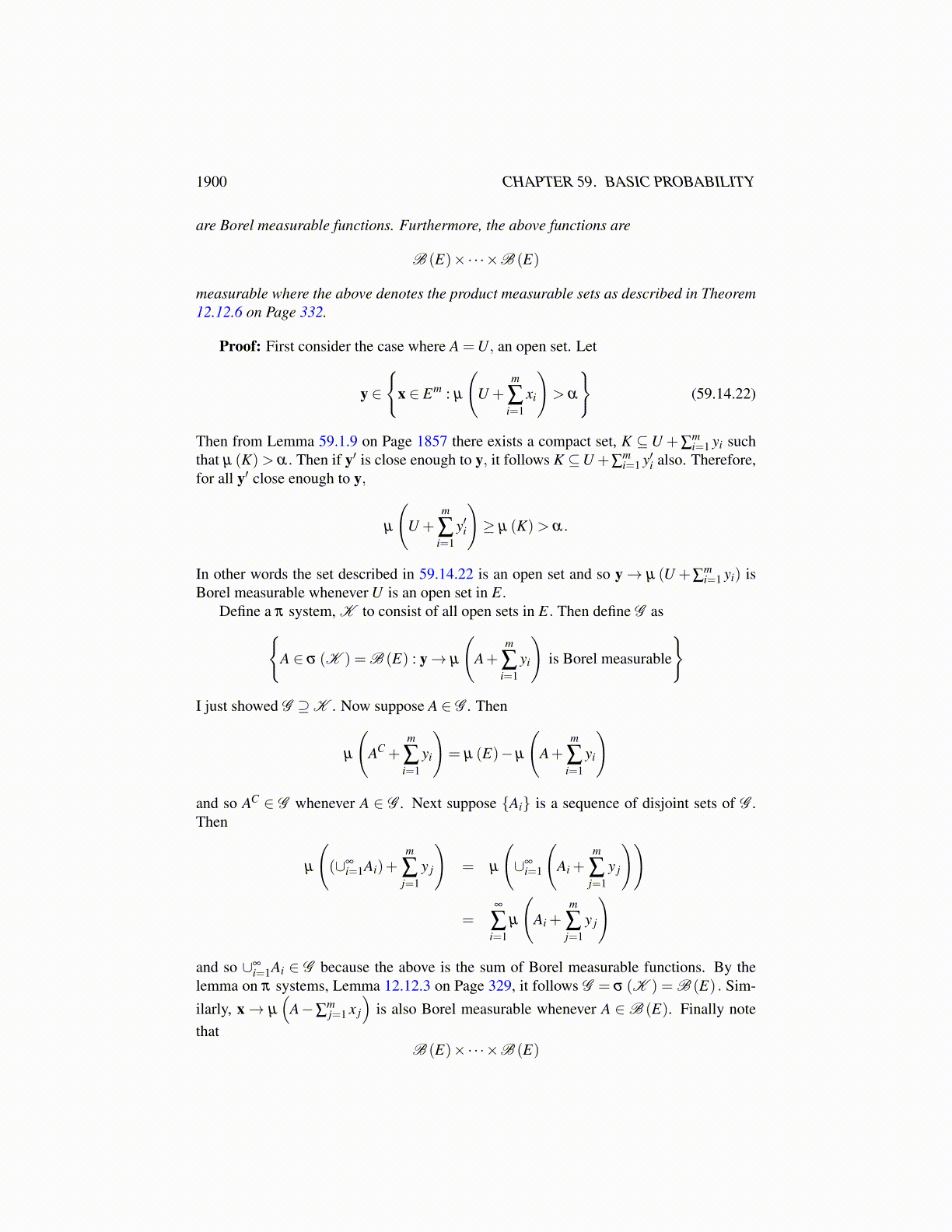
1900 CHAPTER 59. BASIC PROBABILITY
59.14 Convolution And SumsLemma 59.1.9 on Page 1859 makes possible a definition of convolution of two probabilitymeasures defined on B (E) where E is a separable Banach space as well as some otherinteresting theorems which held earlier in the context of locally compact spaces. I will firstshow a little theorem about density of continuous functions in Lp (E) and then define theconvolution of two finite measures. First here is a simple technical lemma.
Lemma 59.14.1 Suppose K is a compact subset of U an open set in E a metric space.Then there exists δ > 0 such that
dist(x,K)+dist(x,UC)≥ δ for all x ∈ E.
Proof: For each x ∈ K, there exists a ball, B(x,δ x) such that B(x,3δ x) ⊆U . Finitelymany of these balls cover K because K is compact, say {B(xi,δ xi)}
mi=1. Let
0 < δ < min(δ xi : i = 1,2, · · · ,m) .
Now pick any x ∈ K. Then x ∈ B(xi,δ xi) for some xi and so B(x,δ ) ⊆ B(xi,2δ xi) ⊆U. Therefore, for any x ∈ K,dist
(x,UC
)≥ δ . If x ∈ B(xi,2δ xi) for some xi, it follows
dist(x,UC
)≥ δ because then B(x,δ ) ⊆ B(xi,3δ xi) ⊆U. If x /∈ B(xi,2δ xi) for any of the
xi, then x /∈ B(y,δ ) for any y ∈ K because all these sets are contained in some B(xi,2δ xi) .Consequently dist(x,K)≥ δ . This proves the lemma.
From this lemma, there is an easy corollary.
Corollary 59.14.2 Suppose K is a compact subset of U, an open set in E a metric space.Then there exists a uniformly continuous function f defined on all of E, having values in[0,1] such that f (x) = 0 if x /∈U and f (x) = 1 if x ∈ K.
Proof: Consider
f (x)≡dist(x,UC
)dist(x,UC)+dist(x,K)
.
Then some algebra yields ∣∣ f (x)− f(x′)∣∣≤
1δ
(∣∣dist(x,UC)−dist
(x′,UC)∣∣+ ∣∣dist(x,K)−dist
(x′,K
)∣∣)where δ is the constant of Lemma 59.14.1. Now it is a general fact that∣∣dist(x,S)−dist
(x′,S
)∣∣≤ d(x,x′).
Therefore, ∣∣ f (x)− f(x′)∣∣≤ 2
δd(x,x′)
and this proves the corollary.Now suppose µ is a finite measure defined on the Borel sets of a separable Banach
space, E. It was shown above that µ is inner and outer regular. Lemma 59.1.9 on Page1859 shows that µ is inner regular in the usual sense with respect to compact sets. Thismakes possible the following theorem.